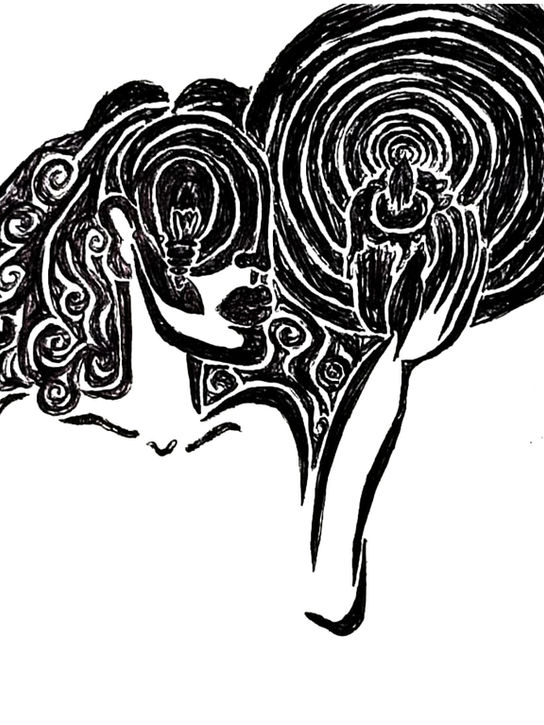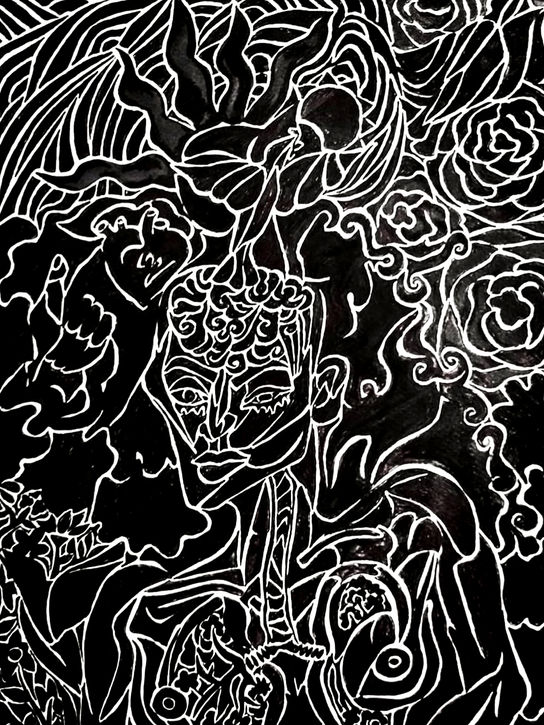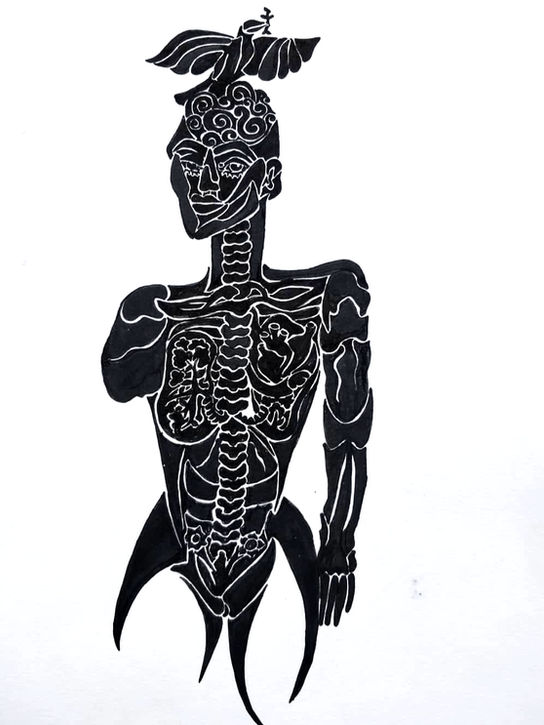OLIVIA ROGALLA


BIO
raised AND ROOTED across multiple countries, I’ve lived in a state of in-betweenness: geographically, emotionally, and creatively. That fluidity first drew me to theatre, where I explored identity through observation and play. From 2016 to 2020, I studied dramatic arts at SFSH in Hamburg (GERMANY) and over time, visual arts became the language I was searching for, a way to make sense of the absurdities of being human and the overlooked stories in everyday life.
My work gives objects, rooms, and bodies a playful, cartoonlike life, reflecting on the ways we relate to the world and the symbolism we project onto the things around us.
I’m fascinated by the hidden stories, NARRATIVES EVEN, in discarded or overlooked items, inviting dialogue, shared discovery, and new ways of seeing the everyday.
Below, I invite you to explore my practice and the ideas and traditions that ground it.
PRACTICE
When I reach a dead end with painting, sculpture becomes a way out, both hands at play, as Max Ernst said, turning creation into a game, a ritual, a vacation from one form to return to another.
My work blends painting and clay, drawing from Surrealist experimentation, which I see as a kind of renaissance of the magic realism embedded in Latin American DNA. These practices are part of a long tradition across Indigenous peoples, Indo-European cultures, and throughout Latin America—Brazil, Mexico,the Andes—where shaping objects, giving form to pain or gratitude, and animating the world through creativity has always been a UNIVERSAL spiritual and communal act.
My pieces remain a personal dialogue with myself, with heritage, history, and the contemporary—tools to process, transform, and imagine new realities. They honor the past while shaping the present, always with a slightly pop, playful twist.

PROCCESS & ROOTS (AND WHY THEY ARE RELATED)
BRazilian Context: Xilography:
Xilography is an ancient art of hand-carved woodblock printing. In the Northeast of Brazil, it became central to "literatura de cordel", a popular poetic tradition printed on pamphlets.
The prints illustrate folktales, POLITICAL MESSAGES, religious stories, and everyday life, often with humor, irony, and vivid storytelling. Artists like J. Borges have made this practice internationally known:


Although I do not practice xilography nor have I ever lived in the Northeast, its bold lines, strong contrasts, and narrative rhythm deeply inspire my drawings. My grandparents came from Ceará and Alagoas, MET IN RECIFE, PERNAMBUCO and HAD THEIR FIRST CHILD, my mother in Natal, Rio Grande do Norte. Certain gestures, textures, and rhythms from that world echo in my work, helping me structure stories visually.
The humor in the storytelling of the Nordestinos, the way they laugh while conveying life’s hard truths,IN ABSTRACT STORIES, is a gift I inherited from the privilege of coexisting with my grandmother Zely, as WELL AS my mother IONA, and ALL THE NORDESTINOS MY PATH HAS BEEN BLESSED BY.
This influence helps me structure stories visually, blending everyday humor and surreal elements in a dialogue between popular culture, history, SPIRITUALITY, and ancestry.
There is a beauty in the cycle of creation and re-creation: what is given, offered, or transformed; returns in unexpected ways:

VIDEO ART FROM 2021

VIDEO ART FROM 2025
ART FROM 2017-2025
PROCCESS & ROOTS (AND WHY THEY ARE RELATED)
BRazilian Context: ex-VOTOS
In Brazil, particularly in the Northeast, there is a rich tradition of ex-votos, objects offered in gratitude for miracles or blessings received.
One of the most famous places for this practice is the Sala dos Milagres (Room of Miracles) in Juazeiro do Norte, where devotees of Padre Cícero leave clay ex-votos shaped like body parts—hands, feet, eyes, mouths—offered in thanks for healing of that specific area. People make these shapes themselves, engaging in the act of creation, so that clay becomes both a medium for creativity and a spiritual, healing practice.
THis is just another piece of proof that thE process of personifying and objectifying pain, giving it a shape, IS rooted in OUR ancestry.
Room of Miracles created by Padre Cícero, Juazeiro do Norte, Ceará:



I like the idea of giving shape to pain that is no longer present, valuing the process of healing, both personal and collective. Ex-votos are traditionally meant to focus healing energy on the part of the body that hurts—but for me, my pain is society itself: its norms, injustices, expectations, and the pressures placed on individuals.
In my practice, I mingle these traditions with my own reflections, offering prayers and gestures toward the collective, Creating my take on ex-votos, not just for the body, but for the wounds of the world around me.
My pieces are a handmade blend of painting and clay, combining techniques and materials to create objects that dialogue with this tradition while also serving as tools for processing, confronting, and softening the pressures I experience. They extend far beyond the physical, shaped by my European circumstances, my GermAN AND BRAZILIAN HERITAGE becomE both a reflection and a coping mechanism, a way to navigate and transform the complexities of the world I—and we—inhabit.
PROCCESS & ROOTS (AND WHY THEY ARE RELATED)
GERMAN / SWISS Context: psychoanalisis
Back in the day—when Freud was still trying to make sense of dreams and then Jung came along diving even deeper into symbols, the idea of looking inward became almost revolutionary. Suddenly, the mind wasn’t just a mess of thoughts, it was a landscape full of meaning and mystery.
Jung, in particular, fascinates me because he treated the subconscious not as a place to fix, but as a place to listen to. His idea that we all share a collective unconscious, filled with universal symbols and archetypes, feels close to how I experience art. Creating becomes a bit like therapy, but instead of talking, I let the images speak.
The surrealists picked up on that too—this freedom to let the unconscious take the lead. I like that moment in history when logic loosened its grip and dreams, chaos, and nonsense suddenly became valid ways of understanding ourselves, I ALSO enjoy analyzing my pieces both during the process and after, discovering what the subconscious has revealed, sometimes even when I wasn’t aware of it while making the work, or was I?
I like to take a complete analytical approach to the spiritual procedure of creation, blending my Brazilian spiritual background with German analytical thinking through psychoanalysis and intuitive, spiritual practice. The act of making becomes a dialogue between the visible and the invisible, a way of connecting personal experience with universal symbols, reason with instinct, and chaos with meaning.














